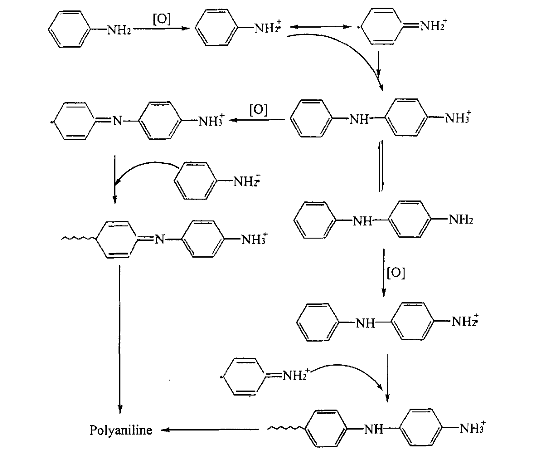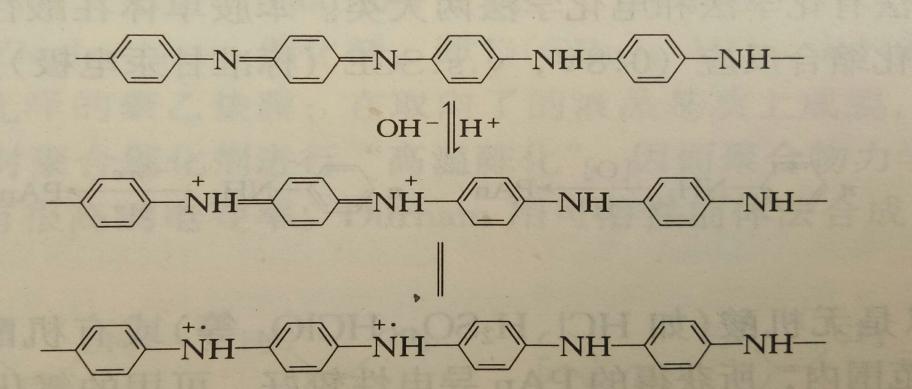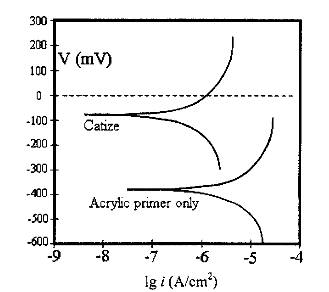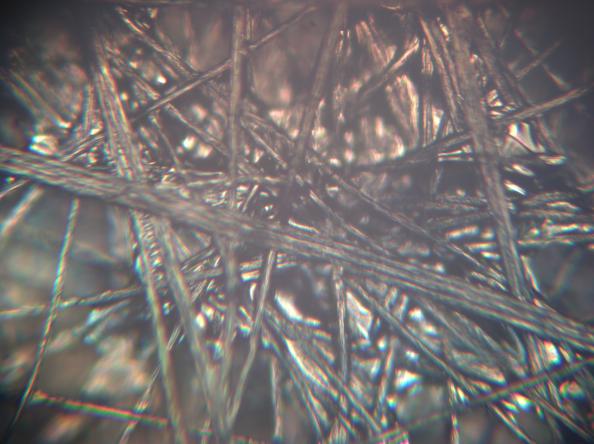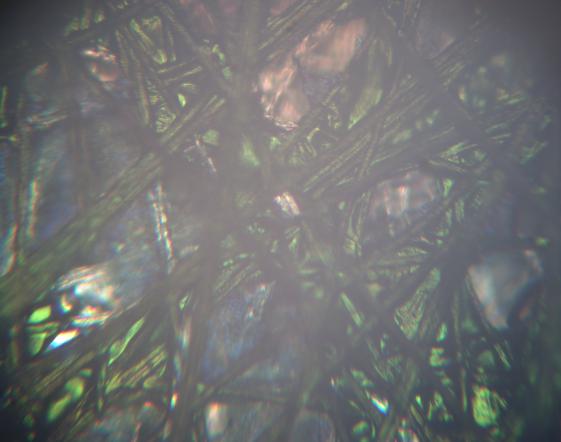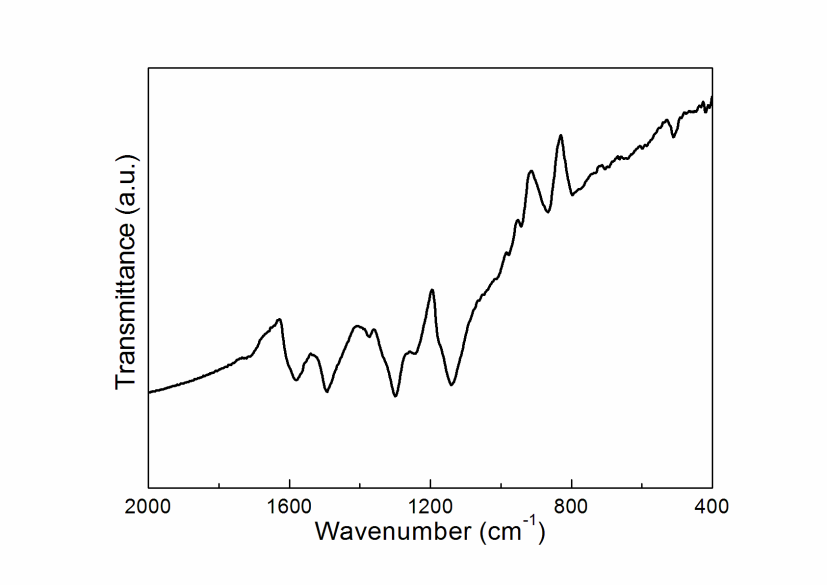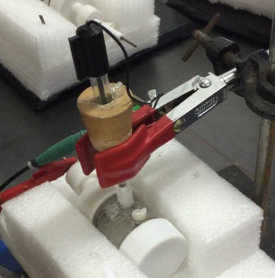PANI电极在中性电解液中的电化学行为毕业论文
2020-06-16 07:04:55
摘 要
PANI作为现代备受欢迎的三大高分子聚合物之一,又比聚吡咯和聚噻吩有更多的优点,倍受研究者和学者们的关注。PANI具有合成成本低,实验操作简单方便、环境稳定性好、热稳定好、耐腐蚀性、高溶解性、导电性能好等优点。本文主要讲述利用原位化学聚合法制在冰浴条件下通过以碳纸为电极制得PANI。用光学显微镜观察在电极上聚合而成的PANI显示墨绿色。并用红外光谱仪获取PANI的红外光谱图,分析PANI的结构为苯环与醌环的交替结构。再用电化学方法中的循环伏安法测定PANI的电化学性质。并得到三种中性电解液下的CV图,从而总结分析得到PANI在中性电解液中的电化学行为。三种中性电解液分别为包括1mol/L的氯化钾(KCL)溶液、1mol/L的氯化钙(Cacl2)溶液和1mol/L的氯化钡(Bacl2)溶液。
关键词:PANI,电化学行为,循环伏安法
Abstract
PANI, as one of the three most popular high polymers, has more advantages than polypyrrole and polythiophene, and has attracted much attention from researchers and scholars. PANI has the advantages of low cost of synthesis, simple and convenient operation, good environmental stability, good heat stability, corrosion resistance, high solubility, good electrical conductivity and so on. This paper mainly describes PANI was made by the use of in-situ polymerization system in the ice bath under the conditions of carbon paper as the electrode .The PANI, which was polymerized on the electrode, was observed with an optical microscope to show dark green. The infrared spectra of PANI were obtained by infrared spectroscopy. And the structure of PANI was the alternating structure of benzene ring and quinone ring. The electrochemical properties of PANI were determined by cyclic voltammetry in electrochemical method. Then the CV images of the three neutral electrolytes were obtained, and the electrochemical behavior of PANI in the neutral electrolyte was summarized. The three neutral electrolytes were 1mol / L potassium chloride solution (KCL) solution, 1mol / L calcium chloride solution (Cacl2) solution and 1mol / L barium chloride (Bacl2) solution.
Keywords: PANI, electrochemical behavior, cyclic voltammetry
摘要 I
Abstract II
引言 1
第一章 绪论 2
1.1 PANI的发展历史 2
1.1.1 聚乙炔(PA)的发现 2
1.1.2 PANI的发展 2
1.2 PANI的历史研究成果 3
1.2.1 PANI的溶解性研究 3
1.2.2 PANI的分子量分布研究 3
1.2.3 PANI的耐腐蚀性能研究 4
1.2.4 PANI在不同质子酸下的研究 4
1.3 PANI的结构组成 4
1.4 PANI的合成方法 5
1.4.1 化学合成法 6
1.4.2 电化学合成法 7
1.5 PANI的性质 9
1.5.1 PANI的导电性 9
1.5.2 PANI的氧化还原性质 9
1.5.3 PANI的耐腐蚀性 10
1.5.4 PANI的电致变色性 10
第二章 PANI的制备 11
2.1研究重点 11
2.2 PANI的制备 11
2.2.1实验仪器、材料和用具 11
2.2.2实验步骤 11
2.3对PANI结构和性质的分析 12
2.3.1利用光学显微镜观察PANI在碳纸上的生长 12
2.3.2利用红外光谱仪对PANI的结构进行分析 13
第三章 PANI电化学性质的测量与分析 15
3.1获取PANI的CV图 15
3.1.1实验仪器和材料 15
3.1.2实验步骤 15
3.2实验数据及其分析 16
3.2.1PANI在三种电解液中的CV图 16
3.2.2 PANI在三种电解液中的CV图及分析 19
第四章 总结和展望 22
参考文献 22
引言
PANI是一种具备与众不同的光学、电学性质的导电高聚物。在PANI中掺杂特殊的试剂后其能表现出良好的导电性。同时PANI相比较于其他的高聚物比如聚吡咯(PPY)、聚噻吩(PTH)时有着明显的优势,比如其具有优良的环境稳定性,可用于制造电池、电容器、传感器等。
PANI的制取比较常用的方法分为了两种,一种是化学氧化合成法[[1]],一种是电化学氧化合成法。化学氧化合成法更多的应用于较大规模[[2]]的制备PANI。类似小规模、小成本的制备PANI,则更加的偏向于电化学氧化合成法。且所获取的PANI纯度更高。鉴于现在生产技术的缺陷,大规模生产PANI的费用太高,所以现阶段电化学聚合聚苯胺比较受欢迎。
PANI是由苯环与醌环不断交替[[3]]连接而构成的,每种PANI中的苯环与醌环不相同的占比决定了PANI氧化还原程度的变化。从而发现了PANI的结构是可以可逆性转变的。根据聚合反应的条件的不同,PANI的结构可以在完全氧化态(PBN)、完全还原态(LB)、中间氧化态(EB)三者中实现可逆性的转换。
相关图片展示:
